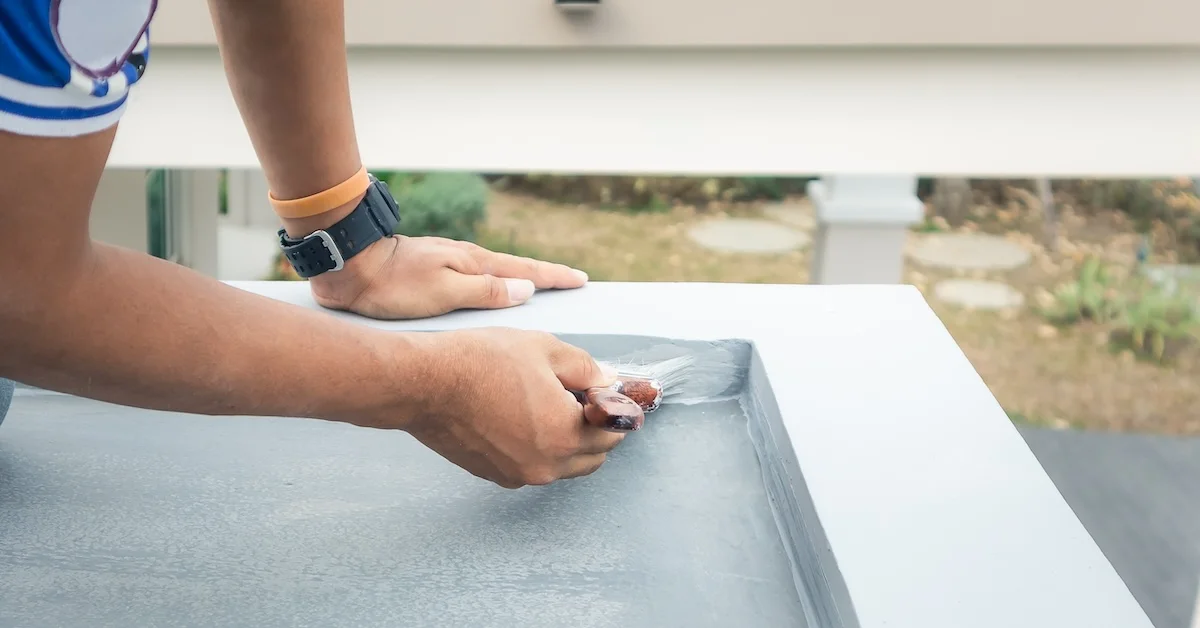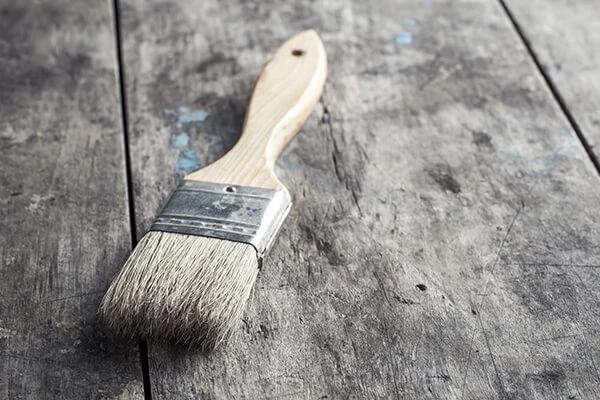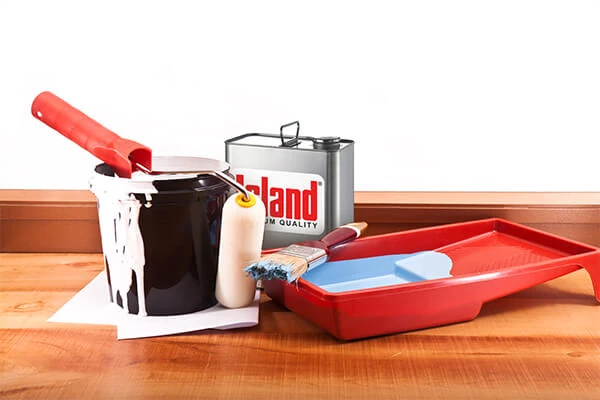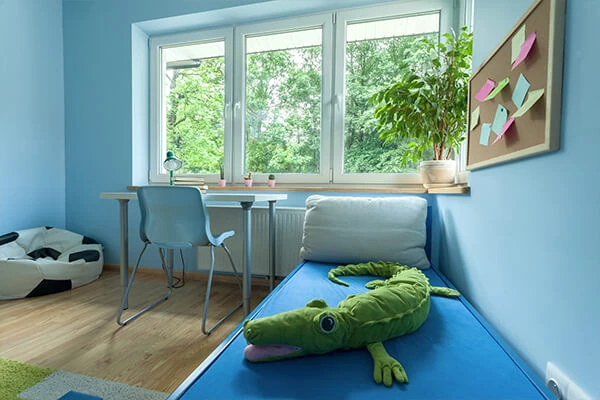Home Decorating Tips


Home Decorating Tips
A Guide to All Things Epoxy Primer
Posted on January 15, 2024
Last updated September 18, 2025
Have spare epoxy primers at home and no more metal surfaces to paint? Don’t rush to hide them away just yet! While they are great for metal applications, epoxy primers have untapped potential that goes beyond their traditional use. They also work like magic on fiberglass, wood, and plastic.
If you’re curious to know more about the benefits of epoxy primer, you’ve come to the right place. In this article, we’ll cover everything you need to know about epoxy primer, from its benefits to how to use it.
What is Epoxy Primer?
Epoxy primer is a two-part coating solution consisting of a resin and a hardener. The resin component provides adhesion (ability of two surfaces to stick together) while the hardener initiates the chemical reaction that causes the epoxy to cure and form a tough protective layer.
Benefits of Epoxy Primers
Now that we’ve got a good grasp of what epoxy primer is: let’s dive into the exciting part and discover the advantages it brings to the table!
- Adhesion:
An important role of epoxy primer is to enhance the adhesion between the substrate and the epoxy coating or paint. The term “substrate” refers to the underlying material to which a bonding agent or adhesive is applied.
Epoxy primers create a strong bond within the surfaces. This results in a durable and long-lasting finish.
- Surface Preparation:
Epoxy primers play a vital role in preparing the substrate for epoxy coating. It seals the substrate and fills the micro cracks. It also enhances the adhesion property of the putty that will be applied in big cracks and gaps. By doing so, they create a smooth and uniform base, optimizing the appearance of the final finish. - Porosity Control:
Epoxy primers are particularly beneficial for absorbent and porous substrates. They help in preventing issues such as blistering, bubbling, or premature chipping caused by moisture transmission or chemical reactions. - Long-Term Cost Savings:
The primer significantly enhances the materials’ ability to resist corrosion, abrasion, and chemical damage. As a result, the lifespan of the coated surface is prolonged, reducing the necessity for frequent repairs or recoating. Again, this translates to cost savings and a longer-lasting, more durable finish.
Different Types of Epoxy Primers
Each epoxy primer formula works best with specific substrates and coating systems. Some epoxy primers offer varying properties like cure time and chemical resistance. By investing the time to find the suitable epoxy primer, you can prevent potential issues, coating failures, and costly repairs down the line.
Now, let’s explore the most common types available.
High-Build Epoxy Primers:
These primers have a higher solids content, allowing for thicker film builds. They are ideal for filling in surface imperfections and creating a smooth substrate for subsequent coats.
Water-Based Epoxy Primers:
As the name suggests, these primers have water-based instead of solvent-based formulations. They are low in VOCs (volatile organic compounds) and offer easy cleanup, making them environmentally friendly options.
Zinc-Rich Epoxy Primers:
These primers contain a high concentration of zinc particles, providing excellent corrosion protection for metal surfaces. They act as a sacrificial barrier, preventing rust and extending the lifespan of the coated material.
Self-Etching Epoxy Primers: They are designed specifically for use on bare metal surfaces. Self-etching primers contain acidic components that etch into the metal, promoting adhesion and preventing breakage.
Application Technique
Now that you have found the specific primer that suits your needs, it’s time to master the application process. Applying epoxy primer is quite straightforward. To help you achieve excellent results, here are the step-by-step instructions to follow:
- Get the Surface Ready:
Start by giving the surface a good cleaning to remove dirt, grease, and any other contaminants. Use the right cleaning agents and methods for the type of surface you’re working on. Don’t forget to fix any cracks or imperfections if needed. - Safety First:
Make sure you have proper ventilation and wear protective gear like gloves and a mask or a respirator. - Mix it Up:
Follow the instructions provided by the manufacturer to prepare the epoxy primer. Typically, you’ll need to mix the resin and hardener in the right ratio. Use a clean container and some tools for accurate measurements and proper blend. - Choose the Right Tools:
Depending on the size and nature of your project, select the appropriate tools for applying the epoxy primer. Brushes, rollers, or sprayers are common options. - Prime Time:
Apply a thin and even coat of epoxy primer to the prepared surface. Start from one end and work your way systematically to make sure you cover every area. Aim for complete coverage without going overboard or creating pools of primer. - Let it Dry and Cure:
Allow the epoxy primer to dry according to the recommended drying time provided by the manufacturer. Wait until it becomes tack-free ( a state or condition in which the epoxy primer is no longer sticky to the touch). After drying, give it enough time to fully cure, which can take several hours to a few days depending on the specific epoxy primer and environmental conditions. - Consider Additional Coats:
Depending on your project’s requirements and the type of epoxy primer you’re using, you might need to apply multiple coats. Follow the complete instructions regarding the number of coats, resting times between coats, and any sanding steps if required. - Clean Up:
Once you’re done, clean your tools and equipment right away. Use the recommended solvents or cleaning agents to remove any epoxy residue before it hardens.
Prime Painting Partner
With lots of options in the market, how do you know which epoxy primer to take? When it comes to primers, you don’t want to settle for anything less than top-quality products. That’s why Island Epoxy Primer is the perfect choice for your painting needs. With its reliable features, you can trust that your project will be in good hands.
Island Epoxy Primer is an excellent choice for both marine and industrial projects. You’ll have no trouble finding the perfect shade from their wide range of colors, including white, gray, black, red oxide, and more.
This primer dries efficiently within 12-24 hours, minimizing your waiting time. It also boasts an 8-hour pot life, allowing you to mix just the right amount of primer without wasting any.
Whether you require a liter or gallon, Island Epoxy Primer comes in convenient packaging to accommodate your needs.
To discover more about Island Epoxy Primers, we recommend visiting their website. You’ll find a wealth of information, including tips and tricks for various paint projects.
References:
https://islandpaints.com/home-decorating-tips/how-is-epoxy-primer-used-with-paint-a-brief-guide/
https://islandpaints.com/home-decorating-tips/how-is-epoxy-primer-used-with-paint-a-brief-guide/
Our Products
Our line of high quality paints and products will give your home or project the vibrancy it needs.
Explore Colors
Ready to explore colorful possibiliies today? View our popular paint colo combination palettes for great color schemes and room design ideas for interior and exteriors.



